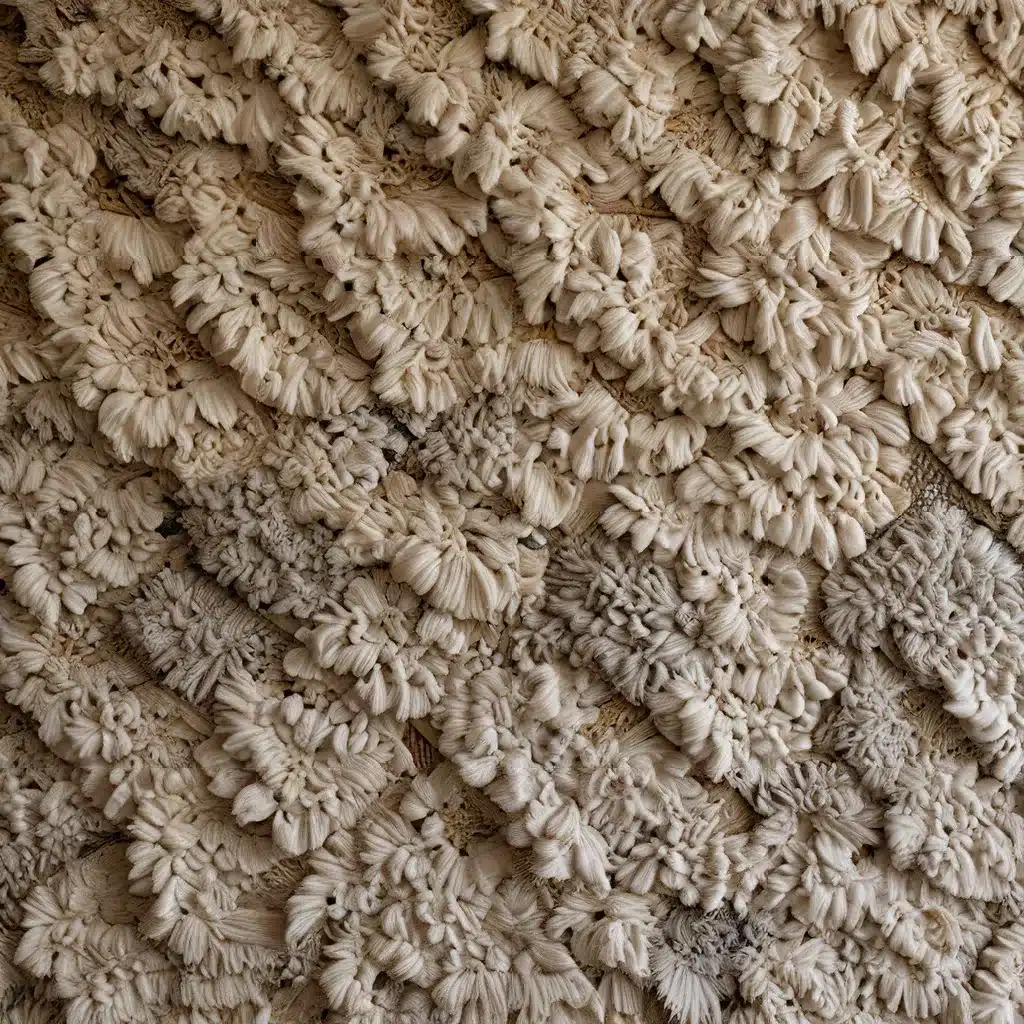
In the captivating world of interior design, the art of creating depth, dimension, and visual intrigue lies in the careful layering of textures. Textural elements can elevate a space from ordinary to extraordinary, transforming bare walls and surfaces into a tapestry of visual and tactile delights.
Whether you’re embarking on a full-scale home renovation or simply refreshing a few key areas, understanding the power of texture can be a game-changer in your design journey. In this comprehensive guide, we’ll explore the various techniques and materials that can be used to weave a tapestry of textures, seamlessly blending form and function to create spaces that captivate the senses.
Mastering the Art of Texture
Texture is more than just a surface quality; it’s a fundamental design element that can profoundly impact the overall aesthetic and ambiance of a space. By strategically incorporating diverse textures, designers can add depth, dimension, and visual interest to even the most straightforward interiors.
Urban Grace Interiors, a renowned design firm, emphasizes the importance of textural elements in their work. “Texture is the backbone of any successful interior design scheme,” says lead designer, Emily Thompson. “It’s what brings a space to life, creating a sense of depth and inviting the viewer to engage with the environment on a tactile level.”
To master the art of texture, it’s essential to understand the wide range of materials and techniques at your disposal. From natural fibers and rustic woods to sleek metallics and plush velvets, the possibilities are endless. By skillfully combining and layering these textural elements, designers can craft a visually captivating and sensory-rich environment.
Layering Textures: The Key to Depth and Dimension
One of the most effective ways to infuse a space with depth and dimension is through the strategic layering of textures. This approach involves incorporating a diverse array of materials, finishes, and surfaces to create a visually stimulating and cohesive design.
“Layering textures is like weaving a tapestry,” explains Emily Thompson. “Each element, from the soft and plush to the rough and rugged, plays a crucial role in the overall composition, creating a harmonious and engaging visual experience.”
When layering textures, it’s essential to consider the interplay between smooth and rough, matte and glossy, rigid and soft. By thoughtfully juxtaposing these contrasting textures, designers can create a sense of visual depth and invite the eye to explore the space in a more captivating manner.
For example, pairing a smooth, polished marble countertop with a rustic, reclaimed wood island can result in a striking contrast that adds depth and interest to a kitchen. Similarly, layering a plush velvet sofa with nubby throw pillows and a sleek glass coffee table can transform a living room into a cozy, yet sophisticated haven.
Textural Techniques: Bringing Depth to Life
Mastering the art of textural layering requires a diverse arsenal of techniques and materials. From the natural and organic to the sleek and industrial, each approach offers a unique way to infuse a space with depth and intrigue.
Natural Fibers and Organic Textures
Natural fibers, such as linen, cotton, and jute, can instantly add a warm, earthy quality to a space. These materials embrace imperfections and subtle variations, creating a tactile and inviting atmosphere. Incorporate natural fibers through area rugs, throw blankets, or decorative accents to anchor a room and ground the design.
Organic textures, such as wood, stone, and rattan, also play a crucial role in layering depth. These materials evoke a sense of connection to nature and can balance out sleeker, more modern elements in a space. Experiment with exposed wood beams, stone accent walls, or rattan light fixtures to infuse a room with rustic charm.
Sleek and Industrial Finishes
On the opposite end of the spectrum, sleek and industrial finishes can inject a sense of modernity and edge into a space. Polished metals, such as stainless steel or brushed brass, can create a striking contrast when paired with softer textiles. Concrete and glass also offer unique textural qualities, lending a contemporary and sophisticated vibe.
Incorporate these industrial-inspired elements through accent pieces, lighting fixtures, or architectural details to balance out the softness of other textures and create visual intrigue.
Plush and Luxurious Textures
For a cozy and inviting ambiance, plush and luxurious textures are a must. Velvet, mohair, and bouclé fabrics can add an air of sophistication and transform a space into a sanctuary of comfort. Drape a velvet throw over a sleek leather chair or accent a bed with a sumptuous mohair blanket to elevate the overall design**.
Patterns and Textural Contrast
Incorporating patterns and textural contrasts can also play a crucial role in layering depth and dimension. Mixing stripes, florals, and geometric designs can create a visually dynamic and engaging environment. Pairing smooth, polished surfaces with rough, textured elements can heighten the sense of depth and draw the eye to specific focal points.
Bringing it All Together: Crafting a Textural Masterpiece
Designing a visually captivating and tactilely engaging space is all about striking the right balance and understanding how each textural element contributes to the overall composition.
“It’s not just about throwing a bunch of different textures together,” cautions Emily Thompson. “It’s about carefully curating and arranging each element to create a cohesive and harmonious design.”
When layering textures, consider the overall color palette, lighting conditions, and flow of the space. Ensure that each textural element seamlessly complements the others, creating a visually captivating and sensory-rich environment.
Remember, the true magic of texture lies in its ability to transform a space, captivate the senses, and evoke a emotional response from those who experience it. By mastering the art of textural layering, you can elevate your interior design and create truly unforgettable spaces that inspire and delight.
So, embrace the power of texture, experiment with diverse materials, and unlock the full potential of your design vision. Weave a tapestry of textures that captivates the eye and invites the touch, and let your spaces come alive with depth, dimension, and irresistible intrigue.

